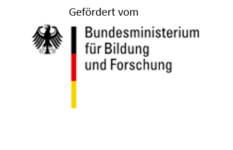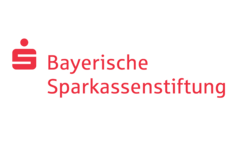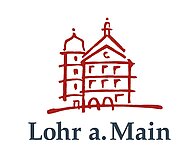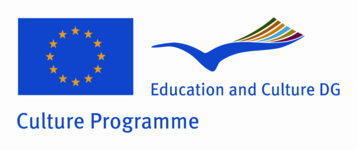Projects of the Research Centre for Historical Visual Media
Research projects:

The Federal Ministry of Education and Research is funding the interdisciplinary project ‘INSIGHT – Signature of Sight – Facets of Seeing’ at the University of Würzburg according to the funding guidelines of „Vernetzen - Erschließen - Forschen. Allianz für universitäre Sammlungen“ (≈ Networking – Exploring – Researching. Alliance for university collections).

School wallchart digitally: The Research Centre for Historical Visual Media with its collection of school wallcharts and explanatory texts was part of the major project KALLICHMACHOS which brought together social sciences, computer sciences as well as librarians.

Which memories do older people have from their school time and which images are connected to these memories? The oral history project BayBiGo focussed on these questions.

The digitsation of the historical core inventory of the school wallcharts collection at the Research Centre for Historical Visual Media Würzburg was supported by the funds of the Bavarian culture funds 2013 „DigiHIS“. The project included two main components:
1. The complete digital reproduction of the historical core inventory of the school wallcharts archive at the Research Centre for Historical Visual Media.
2. Archiving the image and meta data in a standardised database. Through the project, an information infrastructure for the research of school wallcharts as a cultural heritage and memory was developed. Concerning the construction of metadata as well as the digitastion and also the interoperability with other databases, the project followed the recommended technological standards which were adapted appropriately to the characteristics of the objects. The research centre’s core collection was digitalised in high resolution, systematically catalogued and is now permanently archived so it is accessible to researchers.

With the help of BayInventa, central information and data about school wallcharts from the collection of the school museum in Lohr am Main was collected. The project in Lohr was financially supported by the Cultural Foundation of the District Lower Franconia (Unterfranken). The images from Lohr were inventoried at the Research Centre for Historical Visual Media at the University of Würzburg according to scientific criteria and incorporated into an object database.

The goal of this transnational cooperation „Europe and Identity“ which was funded by the European Union within the Culture Programme, was to research the European identity through the medium of school wallcharts. Therefore, as many historical images as possible from the Netherlands, Germany and Denmark from 1830 to 1990 were digitalised, researched and compared from an European perspective. Alongside to the compilation of the images, the international exchange brought researchers and creative artists together and addressed the question of an „European identity“ in a multi-perspective way.
On April 2 and 3, 2009, an international congress took place in the Toskanasaal of the Würzburg Residence covering the topic ‘Europe and identity – History on wall charts in an European perspective’; the cooperative project was organised by the Research Centre for Historical Visual Media of the Universitity of Würzburg. Alongside to the Research Centre for Historical Visual Media, further participants of this project were the former Nationaal Schoolmuseum Rotterdam (today: Nationaal Onderwijsmuseum Dordracht), Netherlands and the former Dansk Skolemuseum Kopenhagen, Denmark.
Exhibit projects
The winter exhibition ‘Winter, Christmas, Winter Rest’ was a cooperation between the Research Centre for Historical Visual Media at the University of Würzburg and the Museum für Franken on the Festung Marienberg in Würzburg. From December 6, 2016 to March 26,,2017, the exhibition displayed a collection of school wallcharts from 19th to 20th century.
By combining images from different times covering one theme, one could learn about changes in design and find amazing similarities at the same time.
A brochure with images and further information was published in combination with the exhibit. If you are interested, please contact the Research Centre for Historical Visual Media.
In the summer of 2016, the Nationaal Onderwijsmuseum in Dordrecht presented the exhibit „STRIJD! Heldenhaftig verleden op schoolpaten“ (≈ Fight – heroic history on school wallcharts). A selection of historical images for the subject of History were displayed, more than 30 images came from the collection of the Research Centre for Historical Visual Media.
Exhibition at the Botanical Garden Würzburg from October 1 to November 30, 2015. In a time without internet or projectors, school wallcharts helped visualising the knowledge which was taught. Alongside school books, they were the main teaching media in the 19th and 20th century. School wallcharts were produced for all subjects – even for teaching botany. With the help of school wallcharts, the native environment with its plants and fruit could be explored as well as faraway landscapes. From arum to cinnamon, school wallcharts visualised the world of native and exotic plants. In a way, school visual media reflects nature’s universe. The world of school wallcharts meets the real world of plants in this partner project between the Research Centre for Historical Visual Media and the Botanical Garden Würzburg.
This was the title of the special exhibit at the “Fischerhaus” in Lohr, from May 17 to June 9, 2013. The exhibit was developed in collaboration of the School Museum in Lohr with the Research Centre for Historical Visual Media. Presenting many large school wallcharts, excerpts of primers, etc. offered a good overview of the most famous German fairy tales as well as their presentation and their use in school.
Under the theme ‚The world mirrored in European image politics – Africa’ students and workers of the Chair of Philosophy of Education, under the direction of Dipl. Päd. Magdalena Zellfelder, analysed selected school wallcharts covering the topic of Africa.
The fourteen school wallcharts visualised and showed examples of how our perception of the African continent and its cultures were also formed through didactics from 1890 to 1970 and how the concepts behind them as well as the image politics changed or were even perpetuated over the course of time.
The 1950s can barely be summed up by one uniting keyword. On the one hand, they mark the founding years of the German Federal Republic, the reconstruction and the ‘Wirtschaftswunder’ (economic miracle), on the other hand they show a difficult time (“bleierne Zeit”, Axel Schildt) with an idealising need of harmony and deferred process of dealing with the past.
School wallcharts highlight main aspects of this historical period. They become meaningful sources which show the combination of the school’s goal to transfer information and the zeitgeist of the 1950s.
The exhibit ‘Between housing shortage, reconstruction and the ‘Wirtschaftswunder’ (economic miracle): School wallcharts of the 1950s’ showed the impact of this special zeitgeist within school image media with the help of selected image examples.
The Potsdam Agreement from August 1945 already stipulated the monitoring of the educational system to enable a successful development of the democratic ideas. With the founding of the German Federal Republic, a societal and educational-political work field with great consequences was developed with the task of educating for democracy. Knowledge about structures and basics of a legitimized constitutional order are to be taught. The goal is to promote a participative form of democracy, in contrast to a ‘synthetic democracy’ from the top or a democracy as a ‘product of the politics from the Occupying Allies’. Schools are central places for this. They carry the task within the young Federal Republic of making the democratic constitution, the liberal and social constitutional state transparent and to explain the rights and duties of the citizens of the new state. School wallcharts of this time show this through series concerning political education. However, images from other subjects also show the new spirit of progress. The wish to make up for the ‘lost years’ in the sign of blossoming wealth is formative for these founding years of the Federal Republic. The simultaneity of persistence and new beginning becomes the signum of the time.
The school wallcharts of the 1950s can be seen as part of a process of change and democracy. While the dark shadow of the war and the consequences still hover over the reality of the Germans’ everyday life during the end of the 40s and the beginning of the 50s, the school wallcharts signal optimism for progress between ‘traditionalism and modernity’.









